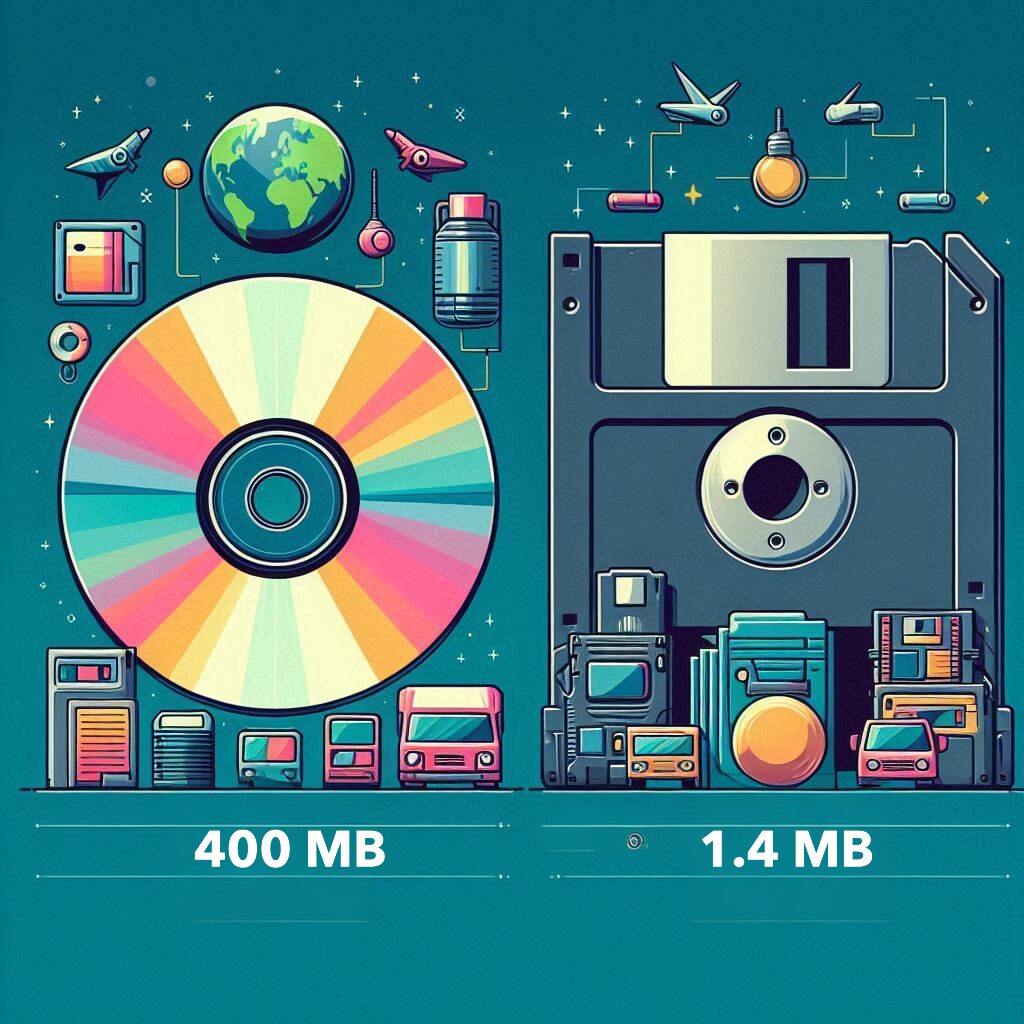The Compact Disc (CD) changed how we consumed music, software, and data. Introduced in the early 1980s, this small, shiny disc became a symbol of technological advancement. It reshaped entire industries and set new standards for media consumption. Let’s explore how the CD transformed music, software, and data storage, and its lasting impact.
The Birth of the Compact Disc
Philips and Sony developed the CD together. They introduced it to the public in 1982. It promised high-fidelity sound, longer playtimes, and greater durability. Unlike vinyl records and cassette tapes, CDs were digital. This new format was initially for audio, but it quickly found use in software and data storage.
Revolutionizing Music Consumption
- Superior Sound Quality:
The CD offered clearer audio than analog formats. Digital audio meant no hiss or distortion, providing a better listening experience. - Durability and Longevity:
CDs were more durable than vinyl records. They didn’t scratch or wear out as easily, allowing longer use without quality loss. - Portability and Convenience:
CDs were compact and lightweight, making them easy to store and carry. Portable CD players allowed people to take their music anywhere. - Influence on the Music Industry:
The music industry embraced CDs. Artists and labels re-released classic albums and created new music for the digital age. The CD also encouraged longer albums, with up to 74 minutes of uninterrupted playtime.
Transforming Software Distribution
- Increased Storage Capacity:
CDs stored up to 700 MB of data, much more than floppy disks. This allowed for more complex and feature-rich software. - Enhanced Software Quality:
With more space, developers included detailed graphics and extra features. This significantly improved the user experience. - Streamlined Distribution:
CDs simplified software distribution. One CD could hold entire software packages, reducing costs. This convenience helped spread personal computers in homes and offices.

Impact on Data Storage and Transfer
- Reliable Data Backup:
CDs provided a reliable and cost-effective way to back up data. People and businesses could easily make copies of important files. - The Rise of CD-ROMs:
CD-ROMs became a standard for data storage. They enabled the distribution of large datasets and multimedia content, transforming information access. - 3. Transition to Digital Media:
The success of CDs led to other digital storage solutions like DVDs and Blu-rays. It also paved the way for cloud storage and streaming, as consumers got used to digital formats.
Legacy and Decline
The CD’s dominance began to wane in the early 2000s. Digital downloads and streaming services offered more convenience and portability. MP3 players and smartphones led to a decline in physical media sales. However, the CD’s legacy endures. It laid the groundwork for the digital age and forever changed media consumption.
The Persistent Presence of CDs in Today’s Digital Age
Despite the shift to digital, CDs still have a niche presence.
- Audiophiles and Music Enthusiasts:
Many prefer CDs for their uncompressed audio quality, which offers a richer listening experience. - Collectors and Fans:
Collectors value physical CDs for their packaging and liner notes. - Educational Institutions and Libraries:
These places still use CDs to distribute educational content and audiobooks. CDs are durable and easy to use. - Developing Regions:
In areas with limited internet, CDs are vital for distributing software and educational resources. - Automotive Industry:
Some car manufacturers include CD players for drivers who want to listen to their collections on the road.
These persistent uses show the CD’s continued relevance, even as its popularity declines in a digital world.
Conclusion
The Compact Disc was more than just a new format. It redefined how we interact with music, software, and data. Its introduction marked the start of the digital era, influencing many aspects of media consumption. The CD paved the way for future innovations, leaving a lasting impact on our lives.